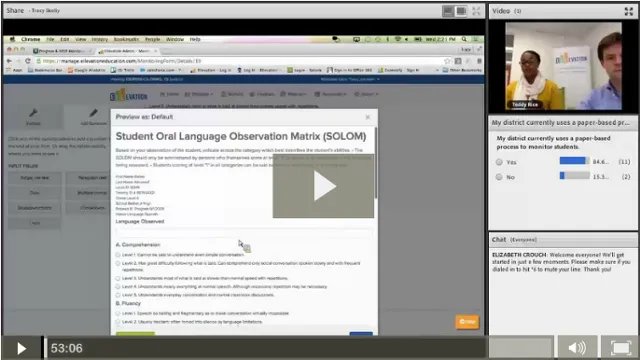Spring Cleaning: Dusting off your EL Student Data to Identify Support Needs


Spring Cleaning: Dusting off your EL Student Data to Identify Support Needs
I’ll admit that I’m a clean freak. So naturally when I received the Spring Cleaning issue of my home improvement magazine, I expected to breeze through their cleaning checklist with ease. Most of their tips were already a regular part of my weekly routine, but I felt my stomach turn when I read Tip #12.
Tip #12: Wash down all interior doors as they tend to collect dirt and dust over time. Guests probably won’t notice that you’ve cleaned your doors but they’ll absolutely notice if you haven’t.
I rushed to the closest interior door and there, in the delicate crevices of the door moulding, I found exactly what they described. To the naked eye, my house was spectacularly clean, but to the well-trained eye and white-gloved hand, my house had missed the mark.
Why am I sharing my cleaning habits with you? Because this recent discovery, while minor in comparison, reminded me of the early No Child Left Behind days when districts began issuing district report cards for the very first time. Although NCLB has been a source of heated debate since it was signed into law in 2002, many agree that it nudged the country towards improvement when it required districts, even the highest performing ones, to do what they had never done before: disaggregate performance data for their subgroups.
 Julie Olesniewicz, Director of Educational Services for Claremont Unified School District, explains, “For many years, Claremont did very well with AMAOs and AYP. Our scores were initially high, but the bar was raised every single year. As we approached the 90-100 percentile, suddenly we became very aware that subgroups of students were not performing.”
Julie Olesniewicz, Director of Educational Services for Claremont Unified School District, explains, “For many years, Claremont did very well with AMAOs and AYP. Our scores were initially high, but the bar was raised every single year. As we approached the 90-100 percentile, suddenly we became very aware that subgroups of students were not performing.”
The Claremont team rallied together to figure out what needed to be done. “We thought through all of the potential reasons why these subgroups were not progressing. We knew that in order to design structured, focused and intentional interventions, we needed to start by looking at the data.”
No strangers to technology, the district leaders began to pull data from their existing tools. In doing so they discovered their first problem. “While our district has access to a couple of really great data analysis tools, they don't house all of the letters, reports, and data views that we need for our English Learner program. Schools had to ask the district for the EL-specific data. This person had this data and that person had that data,” Julie shares.
Julie’s team knew that in order to move the needle for the English Learners in their district, they needed to get the right information into the right hands. “We needed a tool that would allow a principal or EL facilitator to pull up all EL reports and help to streamline the monitoring process. They needed an easy way to collect data and feedback from classroom teachers about their English Learners.”
Ellevation allows Claremont administrators and program specialists to distribute, collect and analyze electronic versions of their teacher input forms, ELD report cards, RFEP monitoring forms, etc. The platform also houses ready-made, clickable EL dashboard views that do not require users to build a query. The EL Duration view allows educators to tag and track LTELs and At Risk students. With the Program Entry and Exit Rates view, educators can easily assess reclassification trends over time. Julie found exactly what she had been looking for in Ellevation.
“Everything that you’ve developed is focused on English Learners. Using Ellevation has been an opportunity to focus on ELs, streamline some workflows and actually improve efficiencies. There’s so much on districts’ and schools’ plates right now, but your platform frees up space to spend more time focused on instruction and what is best for kids.“
I don’t always get the most out of my home improvement magazine’s stock photos and redundant recommendations. But the example of keeping one’s doors clean is a reminder that we all benefit from examining our work with a meticulous and exacting eye once in awhile. This especially rings true as educators work to unpack complicated and sometimes cumbersome government policies with respect to student data.
While there are plenty of opinions regarding the effectiveness of NCLB, only time will tell if the policy benefited students. But for educators like Julie and her team, clean student information and transparent performance data allows them to focus on the big picture: eliminating the achievement gap between English Learners and their English proficient peers so all students can shine.
For more information on how your district can use Ellevation to improve efficiencies, check out this recent webinar where showed districts across California how to streamline the progress & RFEP monitoring workflow.